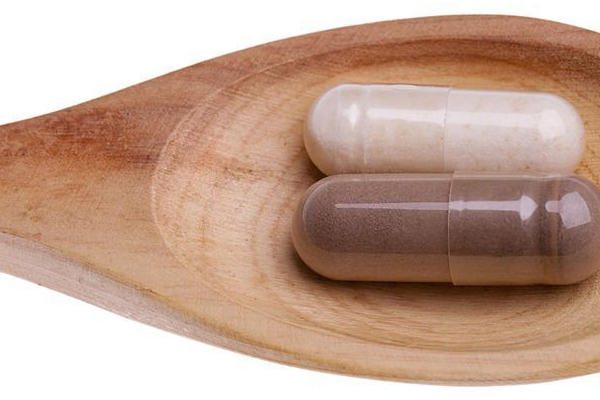Many therapeutics used by integrative doctors help the body regulate the natural processes of healing. They include vitamins, minerals, homoeopathy, homotoxicology, acupuncture and herbal medicine. Conventional pharmaceutical medicines mainly reduce symptoms rather than helping the body heal itself. Natural substances are the best way to help the body regulate its healing processes and re-establish normal feedback systems.
IMMUNE SYSTEM IS KEY BIOLOGICAL PROCESS
The most important biological process is the defence system or immune system. Very few pharmaceutical medicines improve the immune system. When stressed, injured or affected by toxins, the immune system responds with inflammation. Most symptoms arise from the immune system trying to correct this. Drugs, such as anti-inflammatory medicines, attempt to minimize these symptoms. By reducing or suppressing the inflammation process, these medicines reduce the immune system’s response to the insult on the body.
A good example is how the immune system responds to an upper respiratory viral infection. The symptoms are fever (anti-viral response), and increased nasal discharges (an attempt to expel the virus and increase immune cells in the area of invasion) as well as sneezing and coughing (to expel the virus and prevent its deeper invasion). All these symptoms are good immune responses.
When pharmaceutical medicine is applied to a case such as this the conventional practitioner will prescribe antipyretic medicines (to reduce fever), antihistamine medicines (to reduce nasal discharges and sneezing) and anti-tussive medicines (to reduce coughing). Drugs are effective at symptom reduction and the patient feels better during the illness. However, the drugs may actually push the disease deeper, causing the patient to need more drugs for possible viral or bacterial bronchitis or pneumonia. Because the immune system may be weakened, the infection can recur and even more, serious illnesses can occur.
Many practitioners of integrative veterinary medicine would treat this patient with bioregulatory medicine. This promotes a stronger immune response to shorten the disease process and to support, rather than reduce, the immune response to the illness. When we can maximize the potential for a strong immune system to disarm invaders and regulating physiologic feedback systems, we vastly improve the chances that our patients can live a long life of full health, with quick recovery from acute incidents.
A LOOK AT HOMOTOXICOLOGY
Dr Hans Heinrich Reckeweg spent his life in the pursuit of uniting the art of homoeopathy with the science of allopathy (conventional medicine), to address the increasing number of multidimensional diseases and deep-seated chronic illnesses we are now seeing. In doing so, he engaged the known principles of both disciplines to trace and heal the ebb and flow of biological systems.
Homotoxicology therapy addresses the whole pathology of an ill patient. It promotes self-healing, reduces and eliminates toxins, promotes organ and cellular function and supports a strong immune system. Homotoxicology is truly a holistic medicine to treat the whole patient, not just the symptoms.
One of the advantages of homotoxicology is that the formulas have such broad and deep activity. Even a superficial knowledge of the combinations will produce startlingly good results.
THE SIX PHASES OF PATHOLOGY
1. Excretion Phase – elimination of toxins: vomiting, diarrhoea, sneezing, etc. a) Nux vomica-Homaccord (Heel) is useful for vomiting b) Veratrum Combination (PCH) is useful for diarrhoea
2. Inflammation Phase – if the excretion phase is circumvented. All the “-itis” illnesses: arthritis, pleuritis, pancreatitis, etc. a) Traumeel (Heel) is the primary formula for inflammation b) Belladonna Combination (PCH) is used for local inflammation, fever, erythema
3. Deposition Phase – defines the early matrix diseases. The “gel between the cells” starts being affected by toxins. In this largely “silent phase”, the body attempts to detoxify by storing metabolic “junk” in the connective tissues, vasculature, and adipose tissues. This phase is the Biological Divide. The first three phases are much easier in which to promote regression of the disease process. But once the disease progresses beyond the Biological Divide, the true chronic disease becomes present, with damage to tissues, cells and organs. a) Lymphomyosot (Heel) is used to promote drainage of toxins in bioregulatory medicine. It uses combinations of b) Whole Body Detox Liquescence (PCH) is used to promote drainage
4. Impregnation Phase – the early stages of a cellular disease. The toxins build up in the matrix and connective tissues, causing structural changes in tissues, cells and organs. This phase is associated with an early chronic disease. a) Lymphomyosot (Heel) is the primary drainer b) Psorinum Combination (PCH) is useful for stimulating the defence system for skin and general chronic illness.
5. Degeneration Phase – damage to cellular defence, enzymatic functions, and energy production. This is a severe state of advanced degenerative chronic disease, with the destruction of tissues, large groups of cells and organs. a) Cell Energy Performance (PCH) is used to regulate the Kreb’s Cycle of cells b) Degex Liquescence (PCH) aids in the support of stimulating mesenchymal regeneration and activation.
6. Dedifferentiation Phase – the neoplastic state, in which biological genetic control mechanisms have been damaged and continue unchecked, until death. a) Immune System Stimulator (PCH) supports the stimulation of the immune system b) Carcinosin Miasm Formula (PCH) stabilizes miasmatic terrain disturbances of neoplasm phase.
Homotoxicology medicines currently used by practitioners include injections, oral tablets, oral liquids and sprays, topical ointments and creams.
